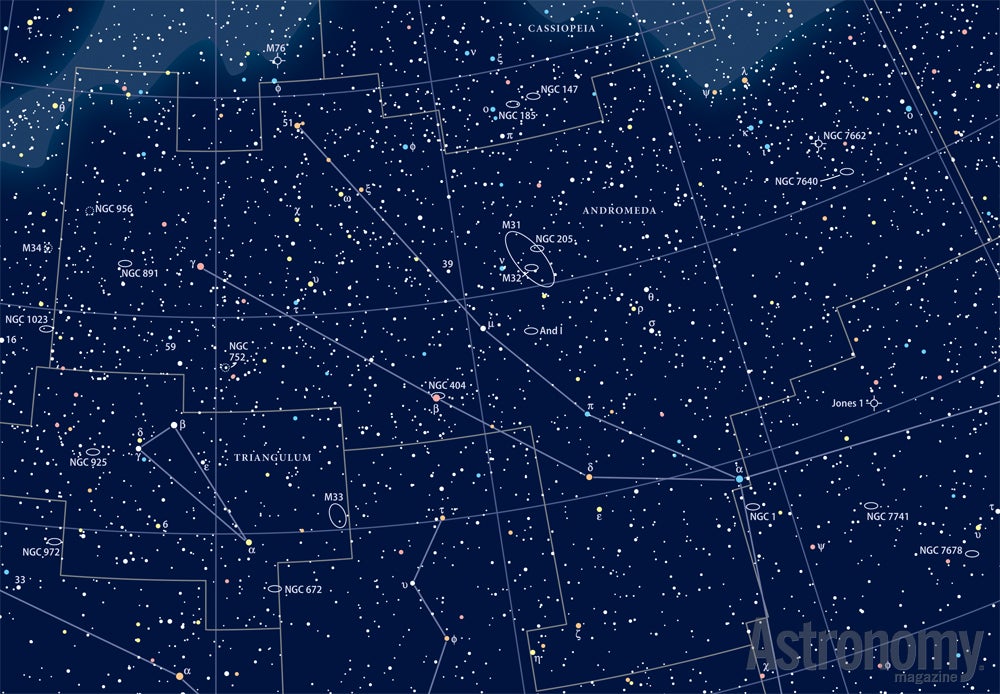What’s the farthest object you can see with only your eyes? Unless you live under extremely dark skies unspoiled by light pollution, the answer is the Andromeda Galaxy (M31), located some 2.5 million light-years away. Traveling across such a vast, empty gulf reduces the combined light of M31’s estimated 1 trillion stars to a 4th-magnitude smudge that we can spot just 1.5° west of Nu (ν) Andromedae.
The early 20th century was a watershed moment for the Andromeda Galaxy. In 1923, Edwin Hubble calculated the distance to M31 at 1 million light-years. Although later measurements showed this number was off, Hubble’s estimate put M31 beyond the known bounds of our galaxy, serving as the first hint that the Milky Way was not the entire universe.
Classified as a barred spiral galaxy like the Milky Way, backyard telescopes display Andromeda as a large, oval smudge of grayish light. Spanning 3°, or six Full Moons placed side by side, Andromeda will engulf your field of view. Take your time studying it and you will notice a bright starlike core marking the center of its disk.
A 4-inch or larger scope shows that the galaxy’s southwestern edge gently fades away, while the northeastern edge abruptly halts. This latter sharp boundary is due to a thin lane of opaque dust along the galaxy’s circumference. A second, dimmer outer dust lane, as well as a dim adjacent glow, lies beyond, marking a separate spiral arm grasping out in our direction.
Joining Andromeda are two dwarf elliptical satellite galaxies, M32 and NGC 205. M32 lies less than half a degree south of the heart of M31, while NGC 205 is instead just over half a degree to its northwest. Another distinctive feature in the field is NGC 206, a large stellar association in M31 containing more than 300 spectral type O and B stars. You’ll find its soft glow about half a degree southwest of M31’s center.
Today, the Andromeda Galaxy may appear relatively dim to the naked eye. But it will eventually get much brighter. In about 5 billion years, it will collide with our Milky Way, ultimately merging into a single giant elliptical galaxy.
Make sure to explore Astronomy’s full list of 101 cosmic objects you must see. New entries will be added each week throughout 2022.
To get the latest astronomical news and observing content delivered directly to your door, subscribe to Astronomy magazine today!










